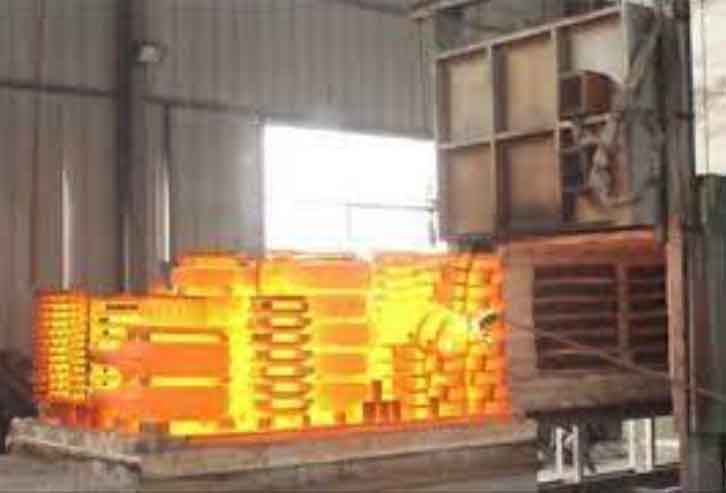Heat treatment is a critical process in minimizing distortion and residual stresses in castings. Here are some best practices to achieve optimal results:

- Design considerations:
- Consider the casting design, including wall thickness, section transitions, and overall geometry, to minimize potential areas of stress concentration.
- Use fillets, radii, and gradual transitions to reduce sharp changes in geometry.
- Provide adequate draft angles to facilitate easy removal of the casting from the mold.
- Stress relief prior to heat treatment:
- Conduct a stress relief process before the actual heat treatment to reduce initial stresses caused by casting, machining, or welding.
- Stress relief can be achieved through methods such as vibratory stress relief, thermal stress relief, or mechanical stress relief.
- Proper gating and riser design:
- Ensure proper gating and riser design to promote even solidification and minimize shrinkage-related stresses.
- Use a sufficient number of risers and properly position them to allow for proper feeding of the casting during solidification.
- Precise control of heating and cooling rates:
- Control the heating and cooling rates during the heat treatment process to minimize thermal gradients and associated distortion and residual stresses.
- Gradual and uniform heating/cooling rates are preferable to rapid or uneven temperature changes.
- Use specialized equipment such as furnaces with programmable controls to achieve precise temperature profiles.
- Quenching techniques:
- Opt for controlled quenching methods, such as air quenching, oil quenching, or polymer quenching, depending on the material and casting design.
- Consider using interrupted quenching techniques, such as step quenching or martempering, to minimize distortion and residual stresses.
- Stress-relieving treatment after heat treatment:
- Perform stress-relieving treatments, such as tempering or annealing, after the primary heat treatment process to reduce residual stresses.
- These treatments help to restore the material’s dimensional stability and relieve internal stresses.
- Post-heat treatment machining:
- Account for potential dimensional changes during heat treatment when planning subsequent machining operations.
- Allow for additional machining or grinding allowances to compensate for potential distortion.
- Process documentation and quality control:
- Maintain detailed records of the heat treatment process parameters, including temperature profiles, holding times, and cooling rates.
- Implement quality control measures to monitor and verify the effectiveness of the heat treatment process.
- Conduct inspections, including dimensional checks and non-destructive testing, to identify any residual stress or distortion issues.
Remember that the specific heat treatment practices may vary depending on the casting material, design complexity, and desired mechanical properties. Consult with heat treatment experts and refer to material-specific guidelines to optimize the process for your specific casting.
